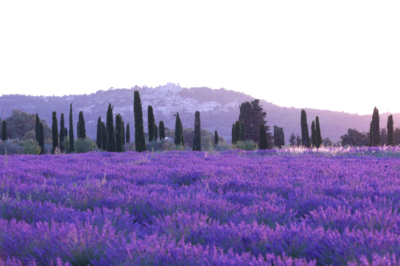Again and again you can read the advice that lavender must be fertilized every two weeks – preferably also with conventional flower fertilizer. However, this information – as widespread as it is – is wrong. Lavender thrives in its Mediterranean home on very poor, often stony soils. Regular fertilization – especially with nitrogenous fertilizers – only ensures that the plant seems to grow splendidly at first, but then dies due to overfertilization.

Contents
Prepare the soil before planting
In order for lavender to thrive in your garden, it needs the conditions familiar from its native land. This includes, in addition to a sunny location, necessarily a permeable, preferably sandy soil. The plant also grows well on stony substrates, which is why seedlings can often be found in the cracks between paving stones. Heavy, clay soils are not suitable for planting lavender and should be improved beforehand to meet the requirements. If you have such a garden soil, you can loosen it with plenty of sand, expanded clay,(20,00€ at Amazon*) brick chips and the like. This is especially important for the drainage of rainwater, because lavender does not like waterlogging. Also acidic soils do not get the Mediterranean plant, which prefers an alkaline pH. But even these substrates can usually be improved with primary rock flour or clay powder. You can also work a little compost or manure into the soil before planting, as well as lime – unless you want to plant scallion lavender, in which case do without the lime.
Fertilize planted lavender only once a year.
In principle, lavender planted in the garden needs fertilizing no more than once or twice a year. The lavender’s wide-spreading and very deep-reaching roots extract sufficient nutrients from the soil. Fertilize the garden lavender at most at the beginning of the growing season – i.e. in March / April – with a little lime as well as with a low-nitrogen fertilizer. Nitrogen – which is also found in manure, guano (12,00€ at Amazon*) and many commercially available flower fertilizers – only promotes the plant’s balding and should therefore be used as sparingly as possible. You should also avoid using mulch material such as bark mulch, as this retains too much moisture. You can keep rampant weeds at bay by planting the lavender in a gravel bed.
Potted lavender needs more intensive care
Unlike garden lavender, potted lavender requires somewhat more intensive care, which includes more frequent watering (planted lavender basically doesn’t need watering at all) and occasional applications of fertilizer. However, even here you do not need to fertilize every two weeks, because usually one gift at the beginning of the growing season and another in June / July is enough. In addition, potted lavender should be transplanted at least once a year in fresh substrate, as well as in a larger container, so that the plant has enough space. Lavender that is crammed into a pot that is too small often fails to bloom or blooms very poorly.
Tips & Tricks
Lavender roots need space and plenty of air. Keep the soil around the plant loose and weed in time. Also, you can spread pebbles or shell lime on the soil – just not with the crested lavender, it does not tolerate lime.

